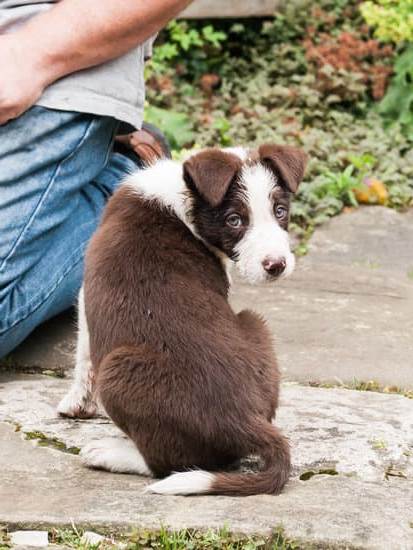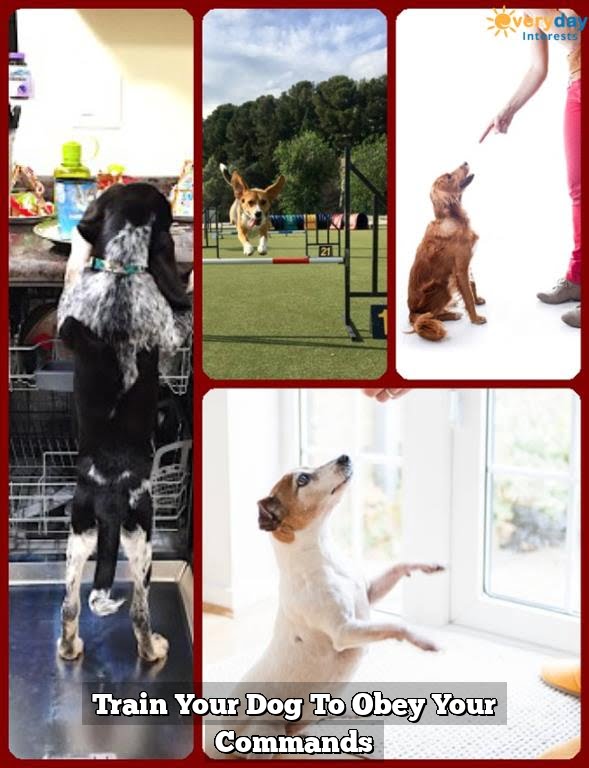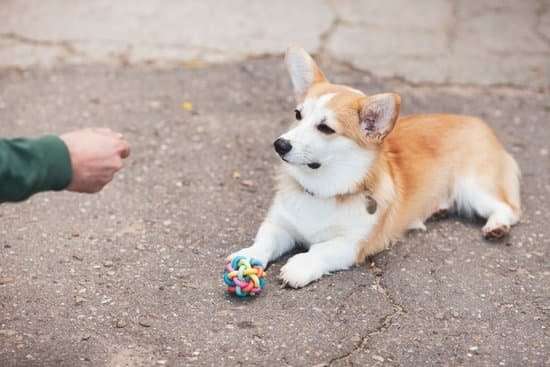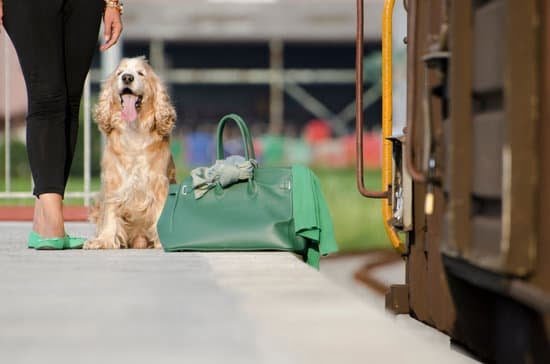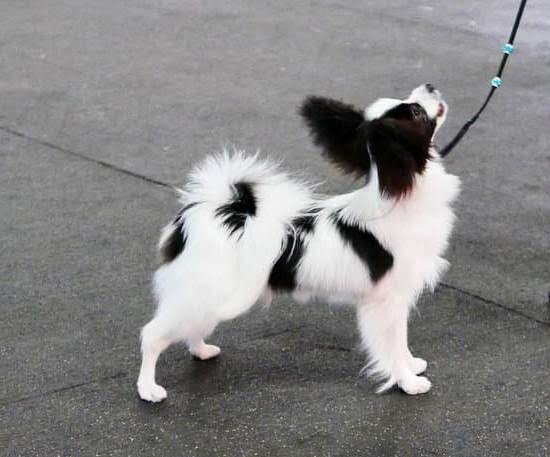Are you wondering how to train your dog to be groomed? Grooming your dog is an essential part of their overall health and well-being, but it can often be a challenging task for both you and your furry friend. In this article, we will provide you with a comprehensive guide on how to train your dog to be groomed effectively and stress-free.
Grooming your dog offers numerous benefits beyond just keeping them looking clean and tidy. Regular grooming helps in maintaining their skin and coat health, preventing mats and tangles, detecting any lumps or bumps early on, and also contributes to bonding between you and your pet. Understanding these benefits will motivate you to invest time in training your dog for grooming.
Before diving into the actual training process, it is important to understand your dog’s individual grooming needs. Each breed has unique coat types that require different grooming techniques. Furthermore, some dogs may have specific skincare needs or behavioral issues that need to be addressed during grooming sessions. Taking the time to comprehend these aspects of your dog’s grooming requirements will make the training process much easier and more effective.
Understanding Your Dog’s Grooming Needs
Importance of Regular Grooming
Grooming your dog is not just about keeping them clean and looking good, it also plays a crucial role in maintaining their overall health and well-being. Regular grooming helps prevent matting, skin irritation, and infections. It also allows you to check for any lumps, bumps, or abnormalities on your dog’s skin and coat. Additionally, grooming provides an opportunity to bond with your pet and can help identify any changes in behavior or physical condition.
Assessing Your Dog’s Coat Type
When it comes to grooming, different breeds have different needs. Understanding the type of coat your dog has is essential for determining the right grooming routine. Dogs with short coats typically require less maintenance compared to those with long or curly coats. It’s important to research or consult a professional groomer to learn about the specific needs of your dog’s breed when it comes to grooming.
Addressing Specific Grooming Needs
In addition to coat type, other factors such as age, lifestyle, and health conditions can influence your dog’s grooming requirements. For example, older dogs may have more sensitive skin and require gentler grooming techniques. Working or outdoor dogs may need more frequent baths and thorough brushing to remove dirt and debris from their coats. Meanwhile, dogs with certain medical conditions may need special shampoos or treatments as part of their grooming routine.
Getting Your Dog Comfortable With Being Handled
When it comes to grooming your dog, one of the first steps is getting them comfortable with being handled. This is essential for a successful grooming routine and will make the process much easier for both you and your furry friend. Here are some tips on how to achieve this:
1. Start Early: It’s important to start getting your dog comfortable with being handled at a young age. The earlier you begin, the more natural it will become for them.
2. Gentle Touch: Begin by gently touching different parts of your dog’s body, such as their paws, ears, and tail. Use slow and gentle movements to avoid startling or overwhelming them.
3. Positive Reinforcement: Whenever your dog allows you to handle them without resistance, be sure to reward them with praise, treats, or their favorite toys. This positive reinforcement will help create a positive association with being handled.
4. Gradual Progress: Take things slow and gradually increase the amount of time you spend handling your dog. This will help build their tolerance and trust in you.
5. Stay Calm: Dogs can pick up on your emotions, so it’s important to stay calm and composed during these handling sessions. If you appear anxious or nervous, it may make your dog feel the same way.
By following these tips and taking a patient approach, you can successfully get your dog comfortable with being handled, setting the stage for a positive grooming experience in the future. Remember that every dog is unique, so be sure to tailor your approach based on their individual needs and personality.
Introduction to Grooming Tools and Supplies
When it comes to grooming your dog, having the right tools and supplies is essential for a successful grooming experience. Not only will the proper equipment make the process easier for you, but it can also help keep your dog calm and comfortable during the grooming session. Here are some essential grooming tools and supplies that you should have on hand:
- Brushes: Different types of brushes are designed for different coat types. For example, slicker brushes are great for removing mats and tangles, while bristle brushes work well for short-haired breeds.
- Combs: A fine-toothed comb can help remove loose hair and prevent matting, especially in dogs with long or double coats.
- Nail clippers: There are different types of nail clippers available, including guillotine-style clippers and scissor-style clippers. Choose the type that you feel most comfortable using.
- Shampoo and conditioner: Look for a gentle, dog-specific shampoo and conditioner to keep your pup’s coat clean and healthy.
- Towels: Have a few towels on hand for drying off your dog after a bath or if they get wet during grooming.
In addition to these basic grooming tools, you may also want to consider investing in specialized equipment such as a de-shedding tool for breeds that shed heavily or electric clippers for trimming certain areas of your dog’s coat. Before using any new tools or supplies on your dog, take the time to familiarize yourself with how they work and ensure that they are safe and appropriate for your pet.
Finally, don’t forget about safety. When using grooming tools such as scissors or clippers, always handle them with care to avoid accidentally injuring your furry friend. With the right tools, proper technique, and patience, grooming can be an enjoyable bonding experience for both you and your dog.
Step-by-Step Guide on How to Brush Your Dog’s Coat
Brushing your dog’s coat is an essential part of grooming and can help maintain their overall health and appearance. Regular brushing can prevent matting, reduce shedding, and minimize the risk of skin irritation. Before you begin brushing your dog, it’s important to choose the right type of brush for their coat. There are different brushes designed for short-haired, long-haired, and curly-coated dogs, so be sure to select the appropriate one for your furry friend.
Start by gently brushing your dog’s coat in the direction of hair growth, using slow and careful strokes to avoid causing any discomfort. Pay close attention to areas where tangles and mats are most likely to occur, such as behind the ears, under the legs, and around the tail. If you encounter a knot or mat, use a detangling spray or conditioner to help loosen it before carefully working through it with a brush or comb.
It’s important to make the brushing experience pleasant for your dog, so be sure to offer plenty of praise and rewards throughout the process. If your dog becomes anxious or tries to pull away, take a break and try again later. With patience and positive reinforcement, you can train your dog to enjoy being brushed and maintain a healthy coat.
| Benefits of Brushing Your Dog’s Coat | Understanding Your Dog’s Grooming Needs |
|---|---|
| Prevents matting | Different brushes for different coats |
| Reduces shedding | Identifying areas prone to tangles |
| Minimizes risk of skin irritation | Using detangling sprays or conditioners |
How to Properly Trim Your Dog’s Nails
When it comes to grooming your dog, one important aspect that should not be overlooked is the proper trimming of your dog’s nails. Long nails can cause discomfort and pain for your furry friend, as well as potential health issues if left unattended. To properly trim your dog’s nails, you will need to have the right tools such as a nail clipper or grinder, styptic powder in case of bleeding, and treats for positive reinforcement.
Before getting started, it is important to get your dog comfortable with the process. You can start by handling their paws regularly and giving them treats and praise to create a positive association. Once your dog is comfortable with having their paws touched, you can gradually introduce the nail trimming tools. It is important to be cautious and only trim a small amount of the nail at a time to avoid cutting the quick, which can cause bleeding and pain.
Proper technique is essential when trimming your dog’s nails. Make sure to use sharp nail clippers and avoid twisting the nail when clipping to prevent splintering. If using a grinder, gently grind down the tip of each nail in short bursts while offering treats and praise throughout the process. Regular maintenance is key to keeping your dog’s nails at an appropriate length and avoiding any potential issues down the road.
| Tools Needed | Benefits |
|---|---|
| Nail clipper or grinder | Helps maintain proper nail length and prevent discomfort. |
| Styptic powder | Stops bleeding quickly in case of accidental cuts. |
| Treats for positive reinforcement | Creates a positive association with the grooming process. |
Tips for Bathing Your Dog
Giving your dog a bath is an essential part of grooming and hygiene. Regular baths can help keep your dog’s coat clean, healthy, and free from odors. However, many dogs are not fond of getting a bath, and it can be a stressful experience for both the pet and owner. Here are some tips to make bathing your dog a more pleasant experience for everyone involved.
Choose the Right Shampoo
When bathing your dog, choosing the right shampoo is crucial. Use a shampoo that is specifically formulated for dogs, as human shampoos can be too harsh for their skin. There are also shampoos designed for specific types of coats such as long-haired or hypoallergenic dogs.
Prepare the Bathing Area
Before bringing your dog into the bath, make sure to prepare the bathing area. Place a non-slip mat at the bottom of the tub or use a shallow plastic basin if you’re giving your dog a bath outdoors. Gather all the necessary supplies such as shampoo, conditioner if needed, towels, and a brush or comb.
Take Your Time and Be Patient
Many dogs are nervous about getting into the water, so it’s important to take your time and be patient with them. Speak to your dog in calming tones and offer reassurance throughout the process. If your dog shows signs of fear or resistance, take things slow and give them breaks when needed. Additionally, provide plenty of treats and positive reinforcement to create a positive association with bath time.
Dealing With Resistance and Fears
Dogs, like humans, can have fears and anxieties when it comes to grooming. Whether it’s a fear of the grooming tools, resistance to being handled, or anxiety about the bathing process, it’s important for pet owners to understand how to help their dogs overcome these obstacles. By addressing resistance and fears in a gentle and patient manner, grooming can become a positive experience for both you and your furry friend.
One common cause of resistance during grooming is a lack of proper introduction to handling and grooming tools at a young age. If a dog has not been properly socialized to being touched or handled, they may become resistant or anxious when grooming is attempted.
It’s important for pet owners to slowly acclimate their dogs to being handled by starting with gentle touches and gradually introducing them to grooming tools such as brushes and nail clippers. This process requires patience and consistency, but can ultimately help reduce resistance and fear during grooming sessions.
In addition to handling resistance, some dogs may develop fears or anxieties related specifically to certain aspects of grooming such as nail trimming or bathing. It’s essential for pet owners to identify the root cause of their dog’s fear and work on building positive associations through desensitization techniques.
This may involve using reward-based training methods, offering treats during grooming sessions, and providing reassurance to help your dog feel more comfortable with the process. Addressing these fears in a gentle manner can help make the grooming experience less stressful for both you and your furry companion.
Reward-Based Training Techniques for Grooming
Training your dog to enjoy grooming can be a challenging but rewarding process. Reward-based training techniques can help make the grooming experience a positive one for your furry friend. By using positive reinforcement, you can teach your dog to associate grooming with pleasant experiences, making the process easier for both of you.
One effective reward-based technique is to use treats and praise during grooming sessions. Every time your dog allows you to brush his coat or trim his nails without resistance, reward him with a small treat and plenty of verbal praise. This helps create a positive association with grooming and encourages good behavior.
Another technique is to gradually introduce your dog to grooming tools and supplies in a positive way. Start by allowing your dog to sniff and explore the grooming tools without actually using them. Then, slowly begin using the tools while offering treats and rewards for calm behavior. This gradual approach can help reduce any anxiety or fear associated with grooming.
Additionally, it’s important to be patient and consistent when using reward-based training techniques for grooming. Dogs thrive on routine and positive reinforcement, so make sure to practice regular grooming sessions with plenty of rewards. Over time, your dog will learn to tolerate and even enjoy the grooming process, making it a more pleasant experience for both of you.
Troubleshooting Common Grooming Problems
In conclusion, training your dog to be groomed is essential for their overall health and well-being. By understanding the benefits of grooming and your dog’s specific needs, you can create a positive and comfortable experience for both you and your furry friend. Getting your dog comfortable with being handled and introducing them to grooming tools in a gentle manner are crucial first steps in the process.
Once you have established a comfortable environment for grooming, it’s important to follow a step-by-step guide on brushing your dog’s coat, trimming their nails, and bathing them. This will help ensure that the grooming process is thorough and effective. Additionally, using reward-based training techniques can help reinforce positive behavior during grooming sessions.
Despite your best efforts, you may encounter resistance or fears from your dog during grooming. It’s important to address these issues with patience and understanding. By using gentle methods and gradually desensitizing your dog to grooming activities, you can help alleviate their anxiety and make the process more enjoyable for them.
Overall, troubleshooting common grooming problems requires patience, consistency, and a deep understanding of your dog’s individual needs. By following the tips outlined in this article and seeking professional guidance when necessary, you can ensure that your dog receives proper grooming care for a healthy and happy life.
Frequently Asked Questions
How Do I Teach My Dog to Be Groomed?
Teaching your dog to be groomed requires patience and positive reinforcement. Start by getting your dog used to being touched all over their body, including their paws, ears, and tail.
Introduce the grooming tools gradually, using treats and praise to create a positive association. Practice short grooming sessions at first and gradually increase the duration as your dog becomes more comfortable with the process.
How Do You Groom an Unwilling Dog?
Grooming an unwilling dog can be a challenge, but it is important to remain calm and patient. Start by desensitizing your dog to the grooming tools by allowing them to sniff and investigate them without any pressure.
Use high-value treats to reward any tolerance or cooperation during the grooming process. If necessary, seek the help of a professional groomer or trainer who can work with you and your dog to address any specific issues.
What Are the 7 Steps of Grooming a Dog?
The 7 steps of grooming a dog generally include brushing out tangles and mats, bathing with dog-friendly shampoo, drying thoroughly, trimming nails if needed, cleaning ears, brushing teeth, and finally giving treats or praise for good behavior during the process.
It’s important to approach each step with patience and care to ensure that your dog remains comfortable and relaxed throughout the grooming routine.

Welcome to the blog! I am a professional dog trainer and have been working with dogs for many years. In this blog, I will be discussing various topics related to dog training, including tips, tricks, and advice. I hope you find this information helpful and informative. Thanks for reading!

